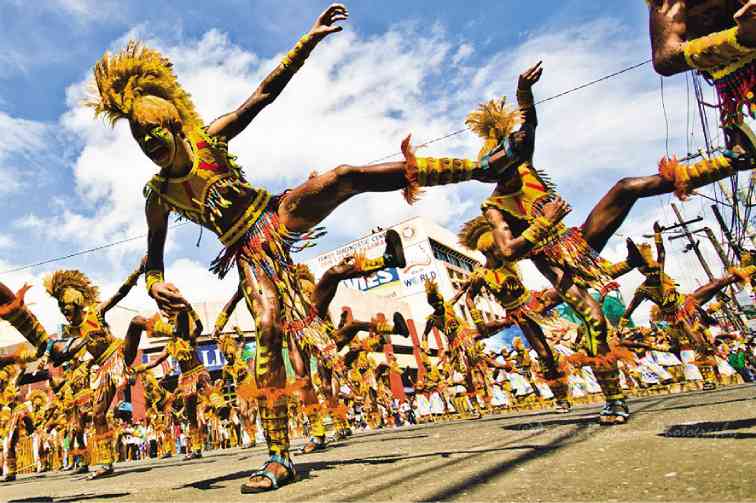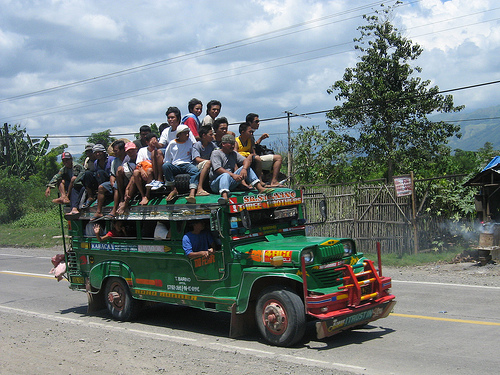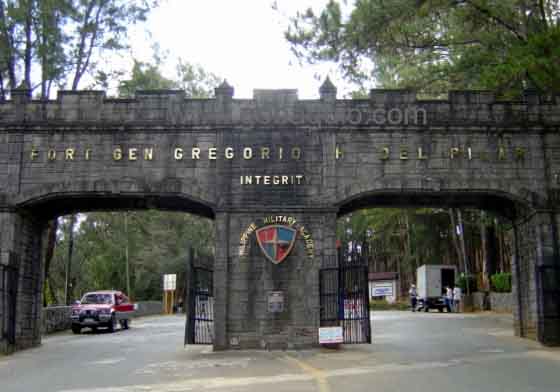Philippine
tourism is booming. Foreign tourists are coming like they have missed the
country for so long. It’s a good sign for the people. It’s a very positive sign
for the economy. The tourism tagline “More fun in the Philippines” couldn’t
have been more fitting for these visitors.
But
it’s not just fun in the Philippines. There are other things people should know
about this country of warm and friendly people with very strong sense of humor.
Their unique and endearing ways kept them close to the hearts of those who came
to know them.
Michael
Jackson died, the prisoners danced to his legacy. Not every prison officer in
other parts of the world can mobilize in a unified way a throng of prisoners in
their bright orange prison suits, dancing with pride in a well-choreographed
Michael Jackson’s Beat It. And for that gained global viewing and recognition.
Only in the Philippines…
- Texting capital
Even
the poorest of the poorest owns at least two cellphones to keep their unlimited
connection to loved ones. Others own more depending on the number of mobile
phone networks there are. Where one phone is enough for most people all over
the world, the Filipinos need them all to stay connected – Smart, Globe, Sun,
Red? Only in the Philippines…
- Mountain Climbing
It’s
not the group of mountaineers you normally see trooping to the mountains for a
fund-raising event. They are the Ifugaos trekking the mountains with such ease
and grace like they are walking the runway for a tribal fashion show. Their
means of commuting from one place to another is miles and miles of walking,
uphill or downhill, non-stop. Only in the Philippines….
- Body Language
Ever
seen a mother calling to her son by mere nodding of the head or by using her
hand waving towards her direction? There’s no need for name calling. Only a loud
hissing sound and an arm resting on her waist while waiting for the boy to come
to her. When asking for the food tab in a restaurant, one would draw a
rectangle in the air and the waiter will come rushing with the bill. No need
for words. Just actions. Only in the Philippines…
- Regional Festivals
People prepare for the festivities
like there’s no tomorrow. It’s a pageantry of colourful costumes, head dresses,
life-size props depicting the region’s culture and heritage. Sinulog,
Dinagyang, Maskara, Ati-Atihan … You can only witness the stories of the
regions through music, songs and dances…Only in the Philippines…
- Loot bags
Nope,
not from a kid’s birthday party but during special occasions like weddings,
anniversaries, adult’s birthday parties. They are no loot bags but the hosts
are ready with containers filled with food from the party, ready to be
distributed to specific guests as give-aways or freebies. It’s common in the
rural areas where foods are prepared in homes instead of hotels or classy
function halls. No one goes home without a loot bag. Only in the Philippines…
- Pasalubong
It’s
innate and natural. Filipinos love souvenirs. And souvenirs they will bring
home wherever they may have travelled to – local or outside the country. The
family goes on vacation to Ilocos and when they head home, they will never fail
to stop at ‘pasalubong centers or stores’ to buy products and food distinct to
the place. Only in the Philippines….
- Double-Decker Bus, Philippine Style
You’ve
probably seen the streets of London with double-decker bus. The Philippines has
its own version – a full-packed jeepney with passengers seated on the roof
where the seats down below can no longer accommodate them. Not usually found in
the metropolis but common sights in the provinces where transportation is
rather limited. Unlike the bus in London, the Philippines’ has no seat
arrangement and one will enjoy fresh air. Only in the Philippines….
- Retail at its Best
The
Chinese traders must have taught the Filipinos very well that they took in the
retailing lessons quite far-out. Go to the nearest market and you will see all
sorts of merchandise in retail packs – cigarette, laundry soap, cooking oil,
garlic, ground or powder pepper. You name it they have it in packs of P5, P10
or P20 at the most. This highlights the flexibility of the Filipinos, adjusting
to the situations, and still enjoying life. Only in the Philippines…
- What’s H in a Name?
The
Filipinos are a bunch of creative thinkers especially when it comes to names.
Parents have formulated certain unwritten rules when naming their children –
Jose for boys and Maria for girls. There may be second names but who cares?
What’s important is they bear the names Jose and Maria. And what’s the letter H
doing in most of the names of the Filipinos like Lhyn (Lyn), Jhun (Jun), Bhong
(Bong), Jhenny (Jenny), or did you hear her call him Dhan or Bhoy? No apparent
reason for H being there but they like it spelled that way. Only in the
Philippines.







